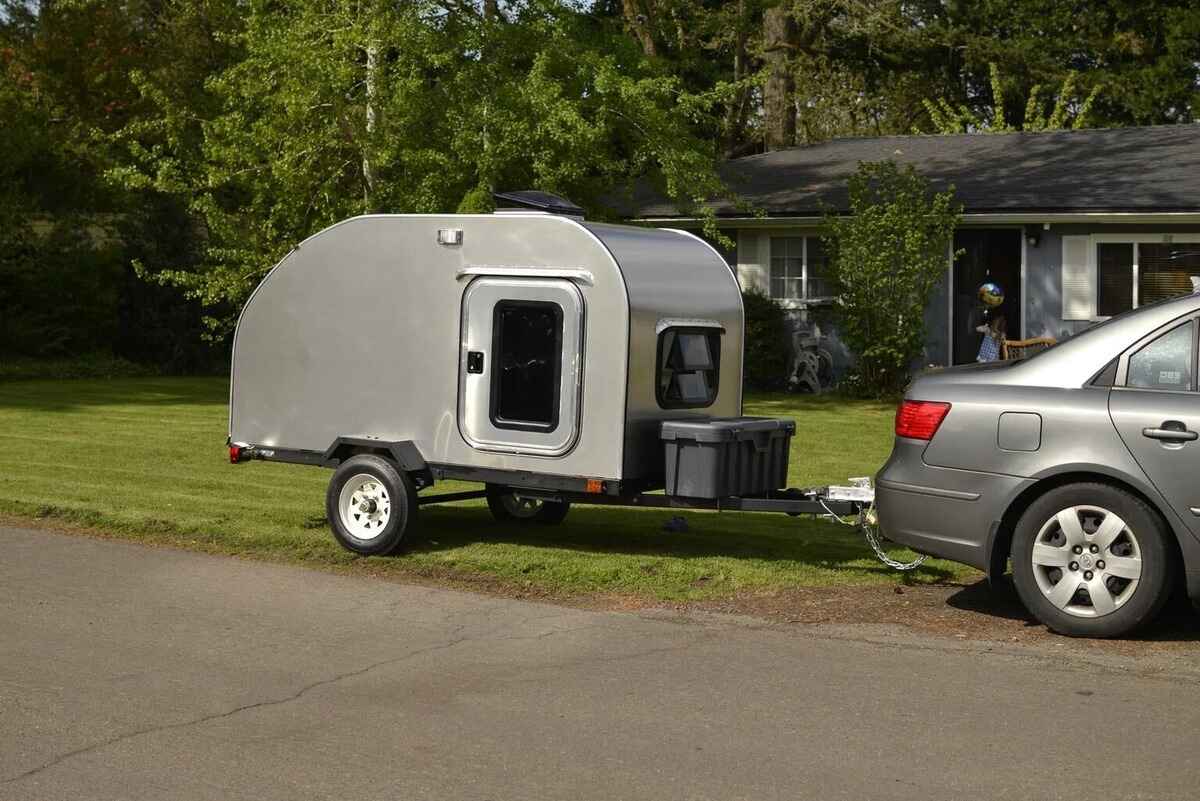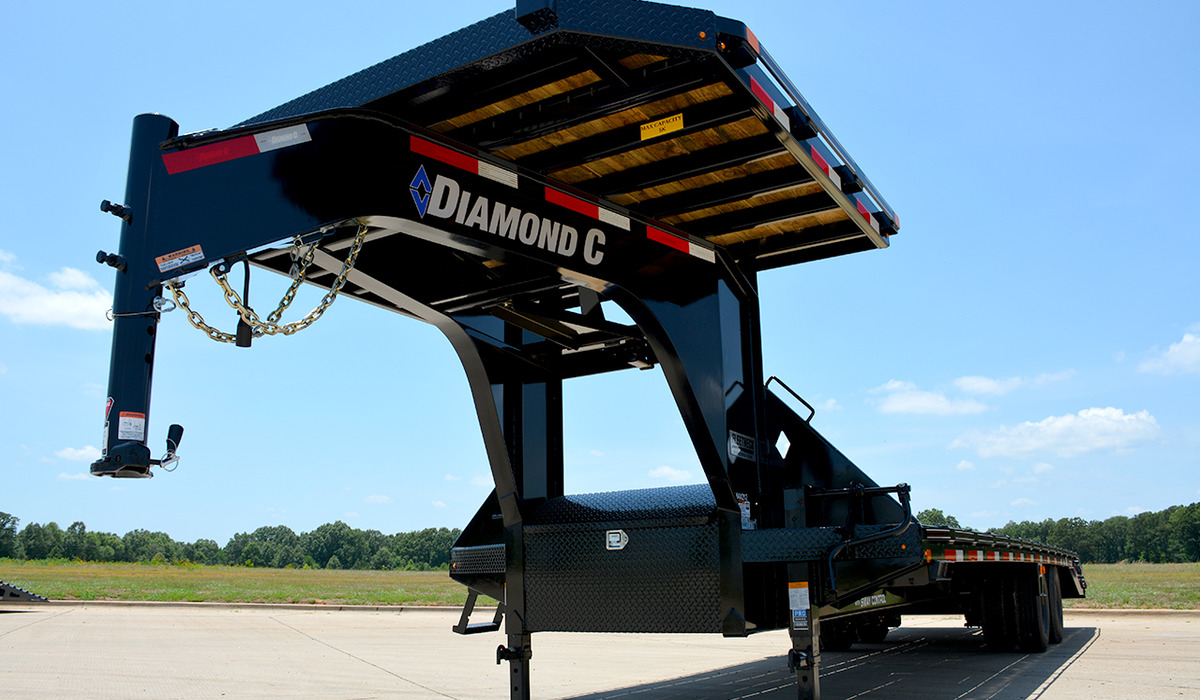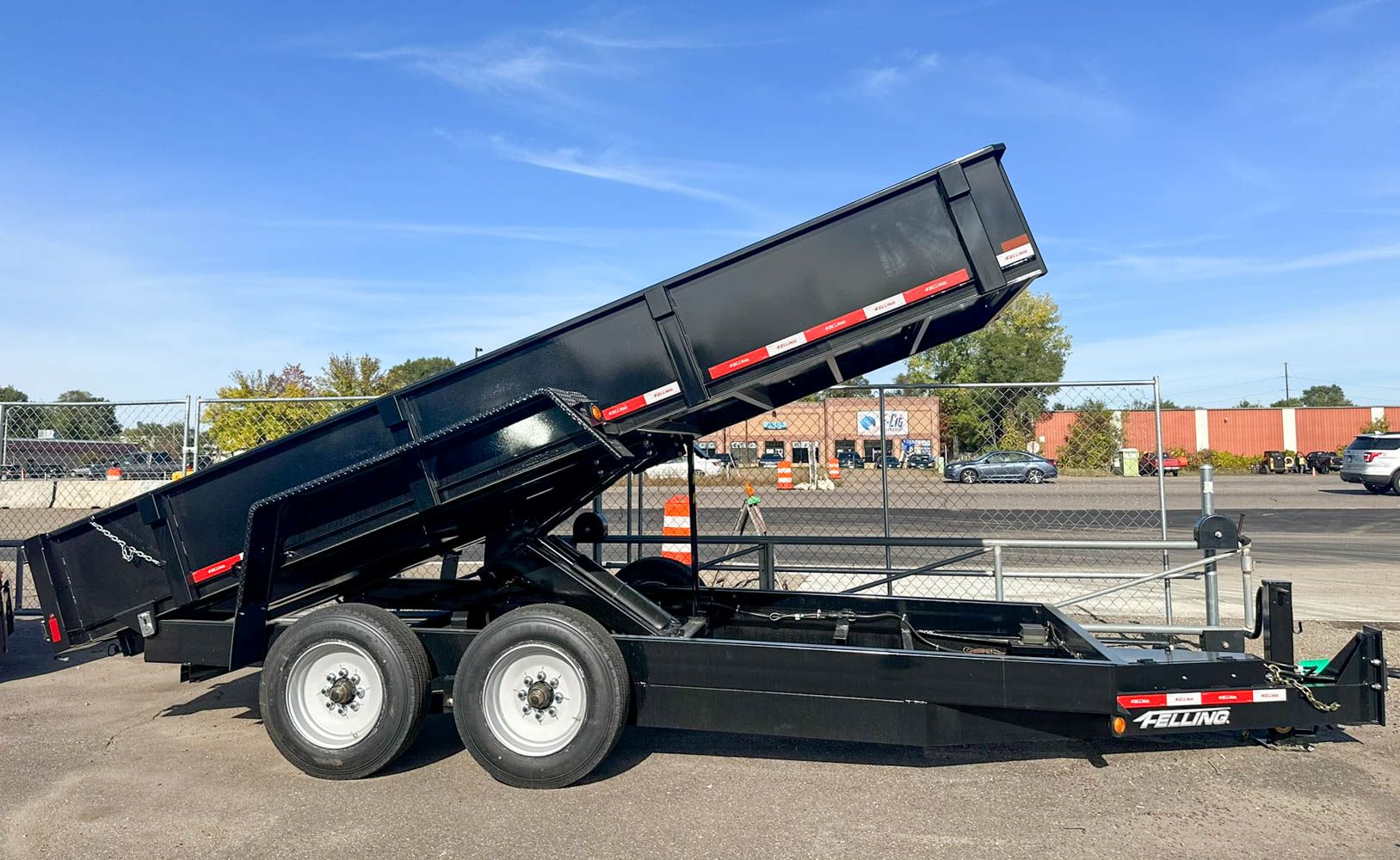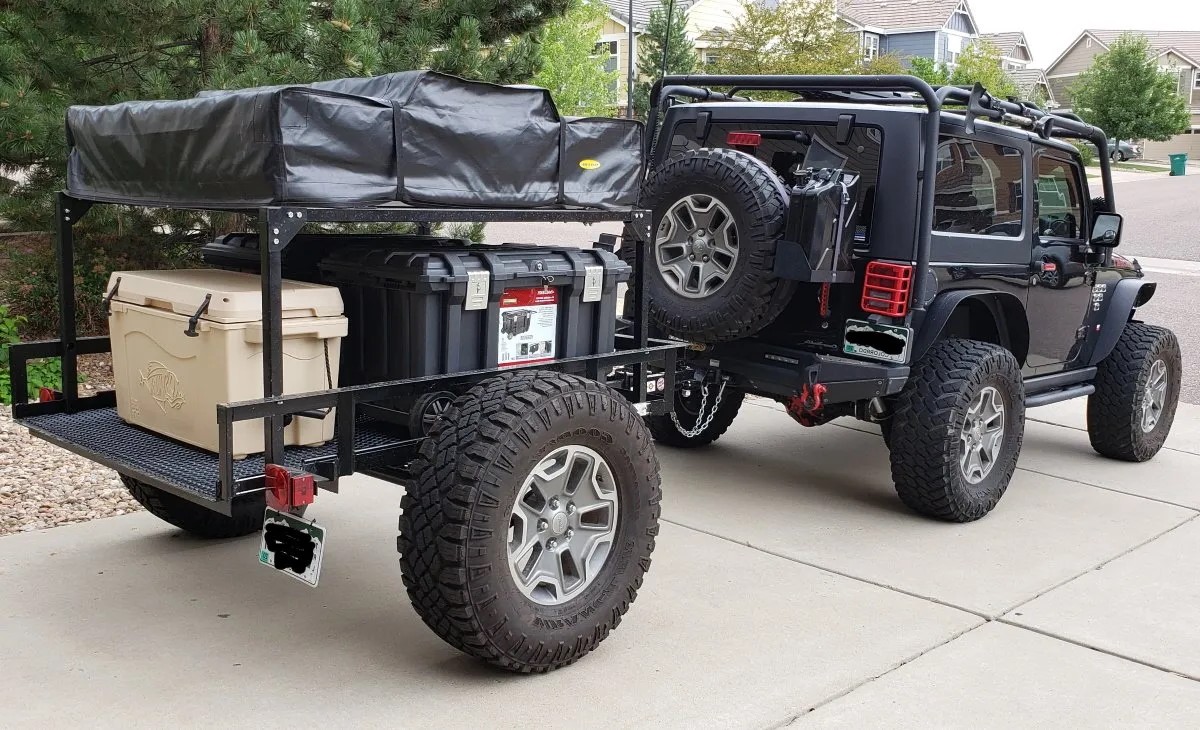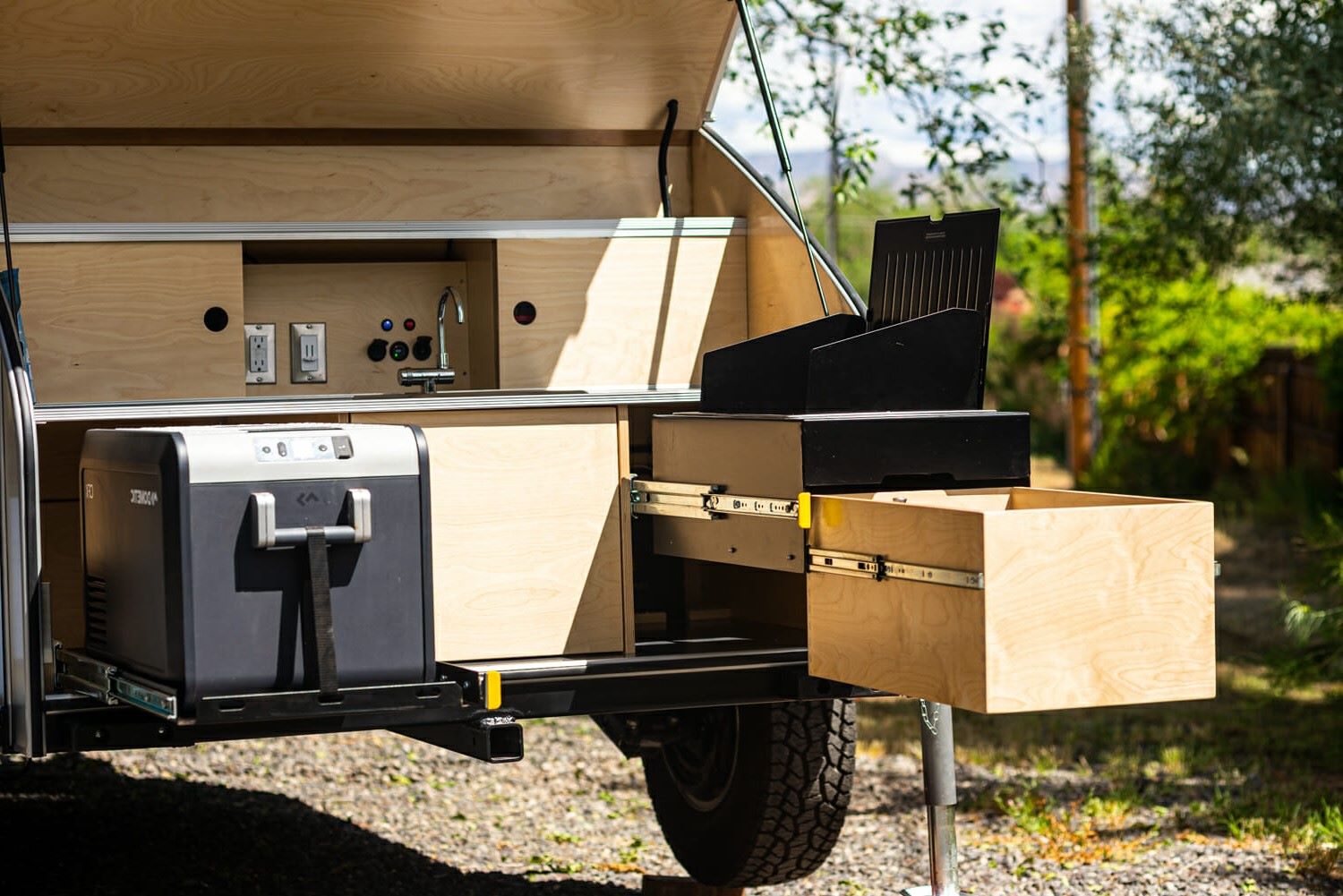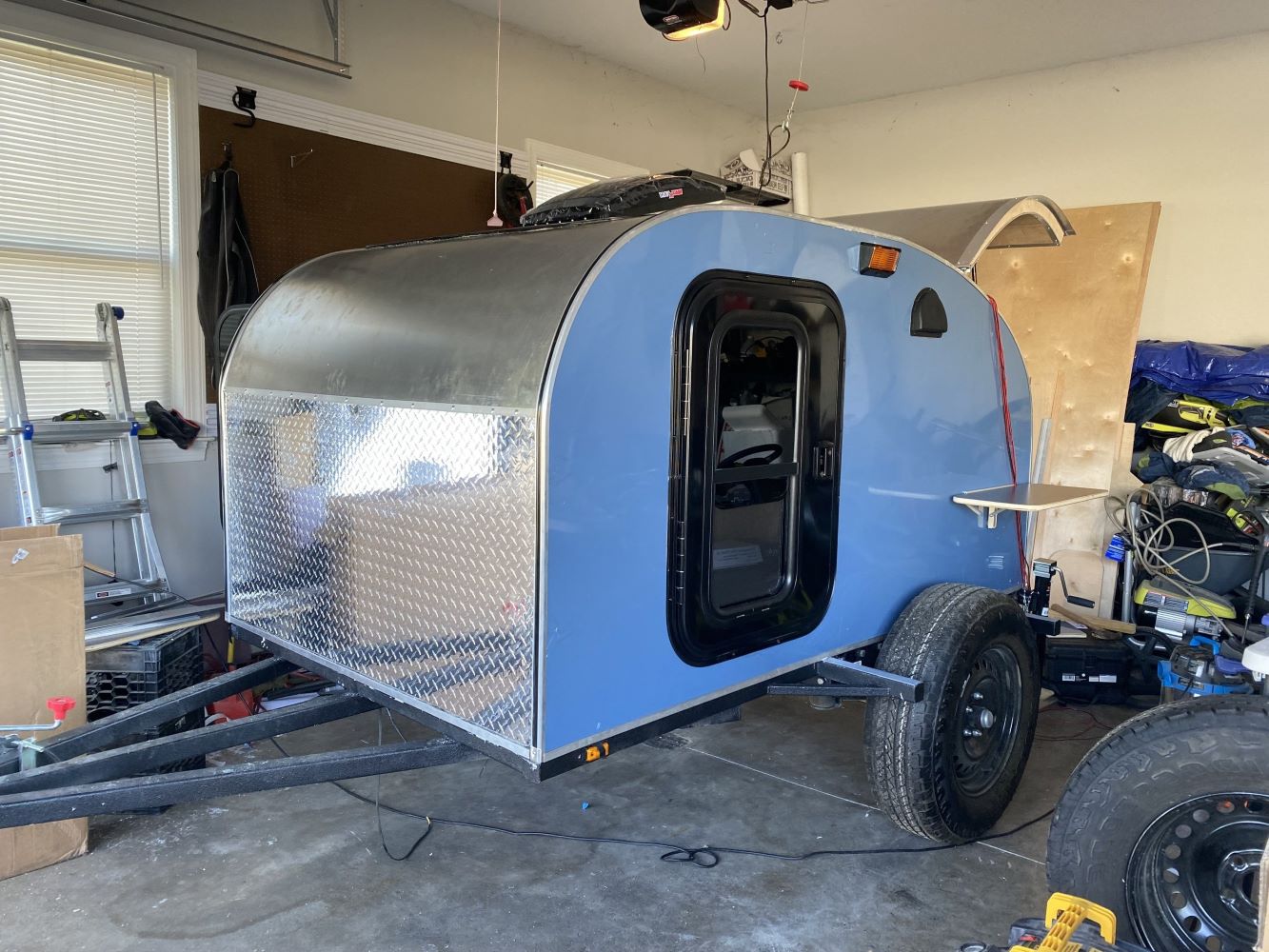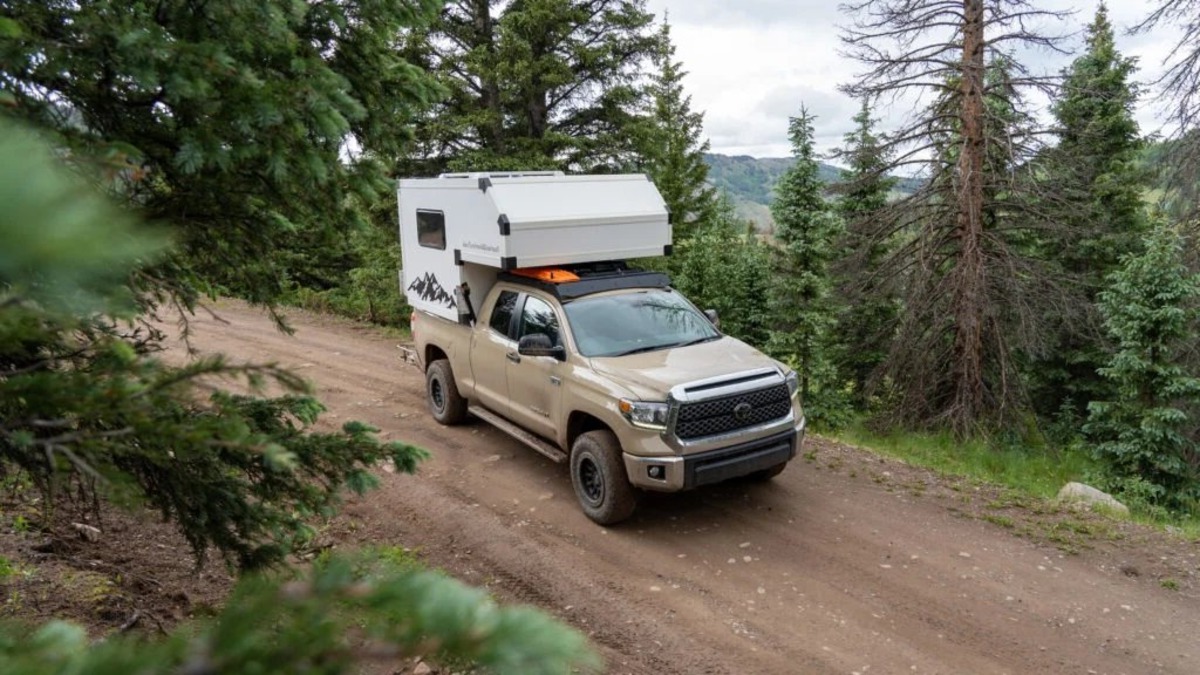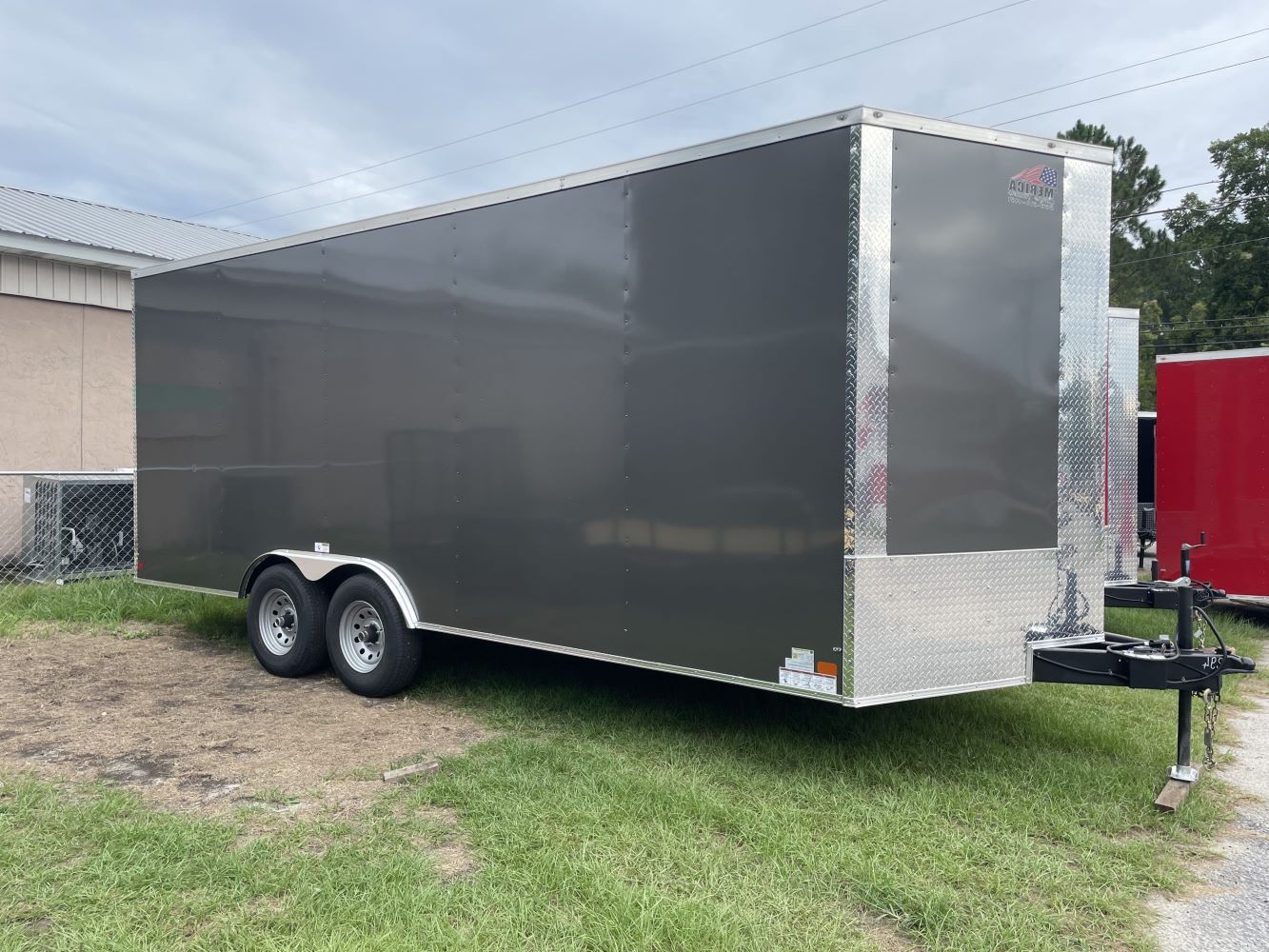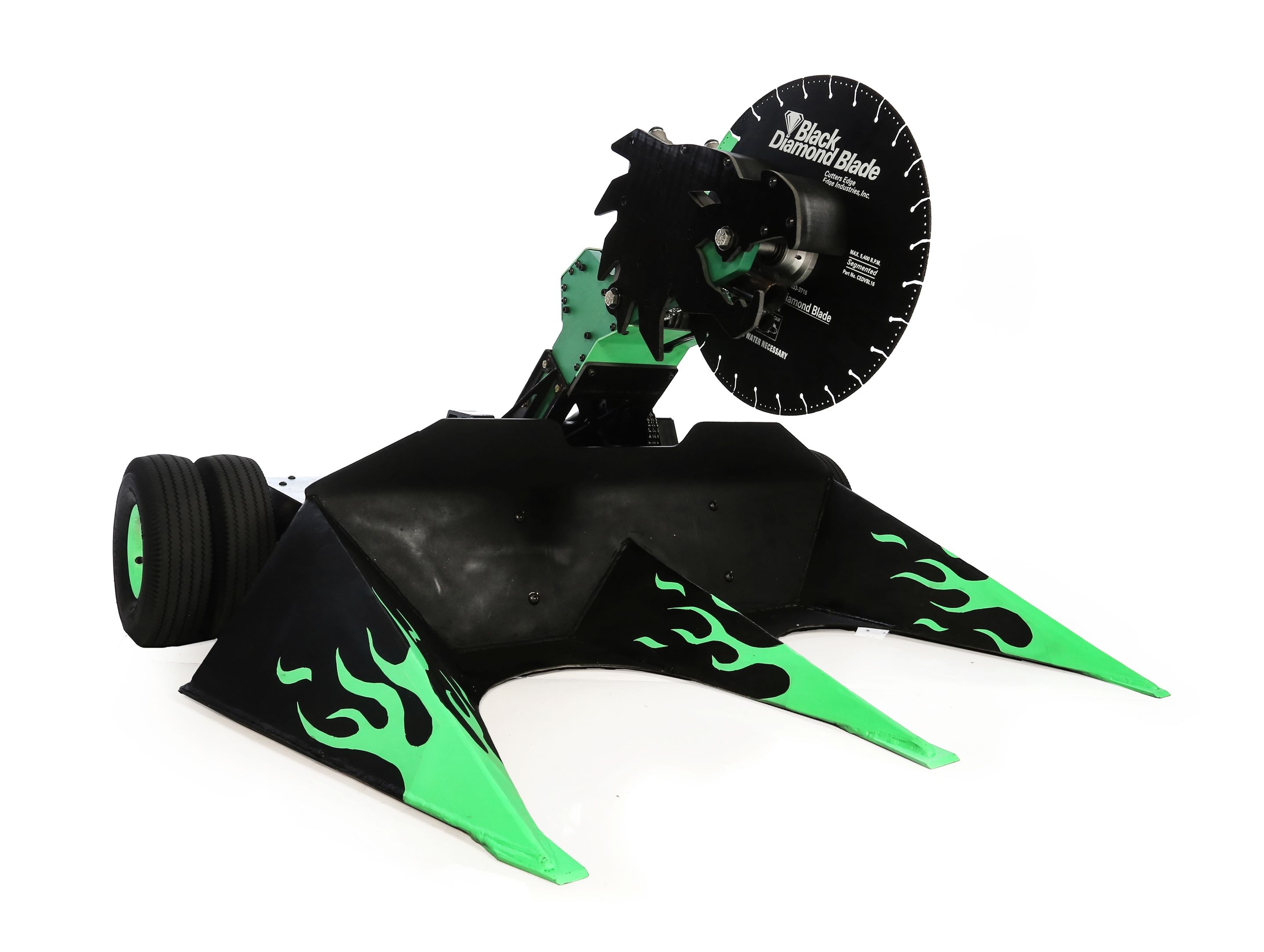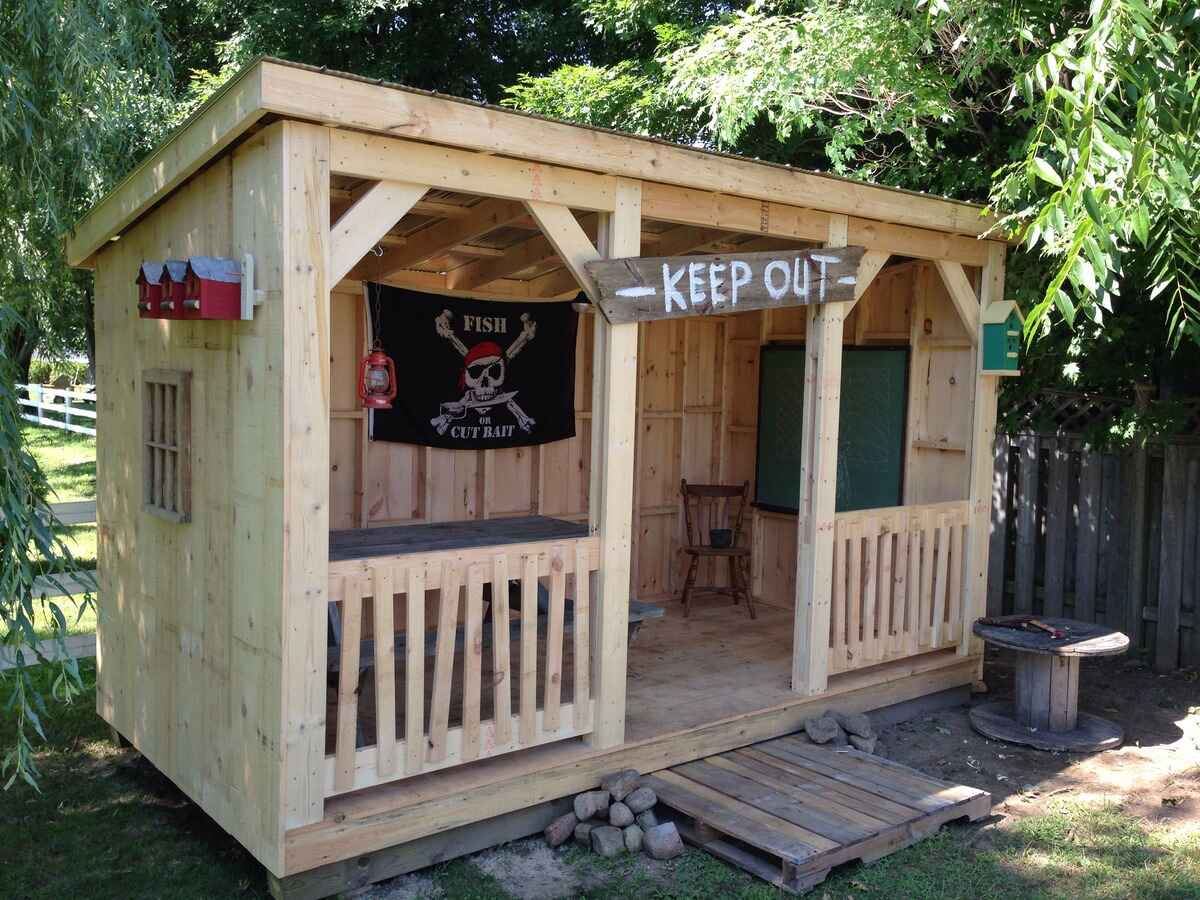Home>Create & Decorate>DIY & Crafts>How To Build A Trailer
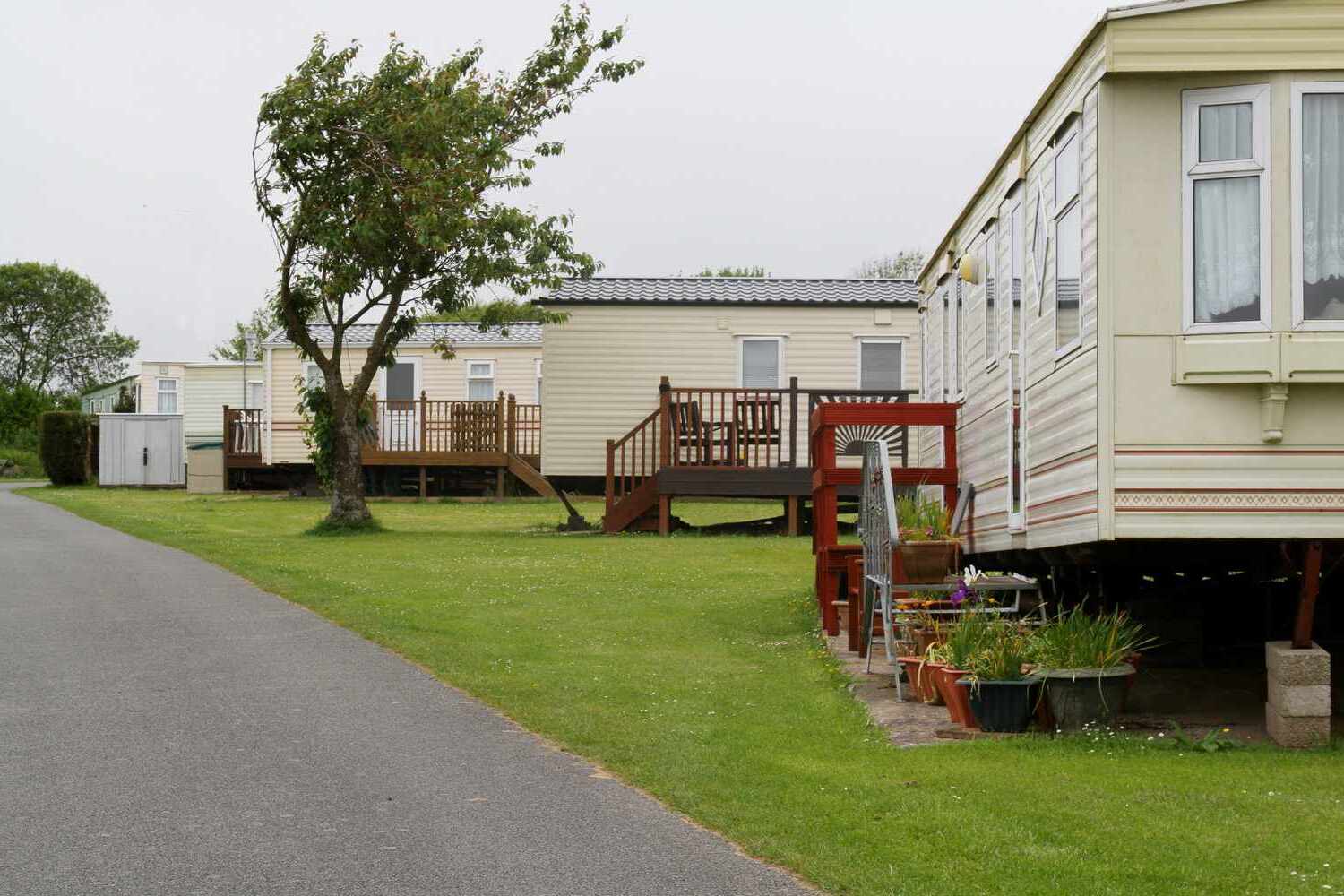

DIY & Crafts
How To Build A Trailer
Published: February 29, 2024

Content Creator specializing in woodworking and interior transformations. Caegan's guides motivate readers to undertake their own projects, while his custom furniture adds a personal touch.
Learn how to build a trailer with our step-by-step DIY guide. Get creative with our DIY & Crafts tips and start your project today!
(Many of the links in this article redirect to a specific reviewed product. Your purchase of these products through affiliate links helps to generate commission for Twigandthistle.com, at no extra cost. Learn more)
Introduction
Building your own trailer can be a rewarding and cost-effective DIY project that allows you to customize a trailer to suit your specific needs. Whether you need a trailer for hauling equipment, transporting goods, or embarking on outdoor adventures, constructing your own trailer provides a sense of accomplishment and the opportunity to tailor the design to your preferences.
By embarking on this endeavor, you can exercise your creativity, enhance your practical skills, and potentially save money compared to purchasing a pre-made trailer. Additionally, the satisfaction of using a trailer that you built with your own hands is unparalleled.
Throughout this guide, we will walk you through the step-by-step process of building a trailer, from gathering the necessary materials and tools to adding the finishing touches and conducting safety checks. By following these instructions, you can create a sturdy and reliable trailer that meets your requirements and reflects your craftsmanship.
So, roll up your sleeves, gather your tools, and get ready to embark on an exciting journey of building your very own trailer. Whether you're a seasoned DIY enthusiast or a newcomer to the world of hands-on projects, this guide will equip you with the knowledge and confidence to tackle this rewarding endeavor. Let's dive in and bring your trailer-building aspirations to life!
Step 1: Gather Materials and Tools
Before diving into the construction of your trailer, it's crucial to gather all the necessary materials and tools. This step sets the foundation for a smooth and efficient building process. Here's a comprehensive list of what you'll need:
Materials:
-
Steel Tubing: This will serve as the primary material for constructing the trailer frame. Opt for high-quality steel tubing that offers durability and structural integrity.
-
Axle and Wheels: Select a suitable axle and wheels based on the intended load capacity and the terrain the trailer will traverse. Ensure that the axle and wheels are compatible with the trailer's dimensions and weight requirements.
-
Plywood or Aluminum Sheets: These materials are ideal for creating the trailer's flooring and sides. Plywood is a cost-effective option, while aluminum sheets offer lightweight and corrosion-resistant properties.
-
Coupler and Hitch: Acquire a reliable coupler and hitch assembly to securely connect the trailer to the towing vehicle. Safety should be a top priority when selecting these components.
-
Lights and Wiring: Invest in high-quality trailer lights and wiring to ensure visibility and compliance with road safety regulations. LED lights are a popular choice for their energy efficiency and longevity.
-
Fasteners and Hardware: Stock up on nuts, bolts, screws, and other fasteners required for assembling the trailer components. Additionally, gather essential hardware such as brackets, hinges, and latches for securing various parts.
-
Safety Chains and Hooks: These components are vital for enhancing towing safety. Ensure that the safety chains and hooks are robust and capable of withstanding the trailer's weight and potential stress during towing.
-
Paint and Primer: If you intend to customize the trailer's appearance and provide corrosion protection, obtain suitable paint and primer for the steel components.
Tools:
-
Welder: A reliable welding machine is essential for joining the steel tubing and fabricating the trailer frame. If you're not proficient in welding, consider seeking assistance from a skilled welder.
-
Angle Grinder: This versatile tool will be used for cutting and shaping metal components, ensuring precise fits during the assembly process.
-
Circular Saw or Jigsaw: If you're working with plywood, a circular saw or jigsaw will facilitate the accurate cutting of the flooring and side panels.
-
Drill and Bits: A power drill and a selection of drill bits are indispensable for creating holes in the steel tubing and wood panels to accommodate fasteners and wiring.
-
Measuring Tools: Equip yourself with a tape measure, square, and level to maintain accuracy throughout the construction process.
-
Safety Gear: Prioritize safety by wearing protective gear, including welding gloves, safety goggles, and a welding helmet when working with metal and welding equipment.
By ensuring that you have all the required materials and tools at your disposal, you'll be well-prepared to commence the next phase of designing and constructing your custom trailer. This meticulous preparation sets the stage for a successful and enjoyable building experience.
Step 2: Designing the Trailer
Designing the trailer is a pivotal phase that lays the groundwork for the entire construction process. This step involves conceptualizing the trailer's layout, dimensions, and features to align with your specific needs and preferences. Whether you envision a utility trailer for transporting heavy equipment or a versatile cargo trailer for recreational activities, thoughtful planning during the design stage is essential.
Begin by outlining the trailer's intended purpose and payload capacity. Consider the types of loads you anticipate hauling and the maximum weight the trailer will need to support. This information will guide the selection of materials and the structural design to ensure that the trailer can safely accommodate the intended cargo.
Next, determine the trailer's dimensions, taking into account the overall length, width, and height. These dimensions should align with the towing vehicle's capabilities and any size restrictions imposed by local transportation regulations. Additionally, factor in the trailer's ground clearance and axle placement to optimize stability and maneuverability.
The layout of the trailer is another critical aspect of the design process. Decide on the configuration of the flooring, sides, and front panel based on the anticipated cargo and your preferred method of loading and unloading. For instance, if you plan to transport irregularly shaped items, you may opt for a flatbed design with removable side panels to facilitate easy access.
Furthermore, consider the aesthetic and functional aspects of the trailer's appearance. Determine whether you want to incorporate custom paintwork, decals, or additional features such as toolboxes or tie-down points. Balancing visual appeal with practicality will result in a trailer that not only serves its purpose effectively but also reflects your personal style.
During the design phase, it's beneficial to create detailed sketches or digital renderings of the trailer to visualize the layout and make any necessary adjustments before commencing construction. These visual aids can help refine the design and ensure that all components fit together seamlessly.
By meticulously planning and designing your trailer, you set the stage for a successful and gratifying construction process. This thoughtful approach allows you to tailor the trailer to your exact specifications, resulting in a finished product that meets your needs and exemplifies your craftsmanship. With the design finalized, you're ready to proceed to the next phase of bringing your custom trailer to life.
Step 3: Building the Frame
Building the frame is a pivotal stage in the construction of your trailer, as it forms the structural backbone that supports the entire assembly. The frame serves as the foundation upon which the flooring, sides, and front panel will be secured, making it essential to ensure its strength and durability.
To commence the frame construction, begin by laying out the steel tubing according to the dimensions and design outlined during the planning phase. Using a tape measure and square, carefully mark the precise locations for cuts and welds to guarantee accuracy and alignment. Once the tubing is marked, use an angle grinder equipped with a metal-cutting disc to make clean and precise cuts at the designated points.
With the individual steel tubing pieces prepared, it's time to assemble the frame. Utilize a welding machine to join the tubing, ensuring strong and secure welds at each connection point. Welding the frame demands precision and attention to detail to achieve structural integrity, so take your time to produce high-quality welds that will withstand the rigors of towing and cargo transport.
As the frame takes shape, periodically check its alignment and squareness to maintain dimensional accuracy. A level can be used to verify that the frame remains true and level throughout the welding process. Additionally, ensure that the frame's corners form perfect right angles to prevent any structural irregularities that could compromise the trailer's stability.
Once the main frame structure is welded and confirmed to be square and level, reinforce critical junctions and stress points with additional welds to fortify the frame against potential torsional forces and weight-bearing stresses. This reinforcement enhances the frame's load-bearing capacity and overall resilience, contributing to the trailer's long-term reliability.
After completing the welding and reinforcement, conduct a thorough visual inspection of the frame to identify any imperfections or areas requiring further attention. Address any welding defects or inconsistencies promptly to uphold the frame's structural integrity and longevity.
By meticulously constructing a robust and precisely engineered frame, you establish a solid foundation for the remainder of the trailer assembly. The frame's strength and dimensional accuracy are fundamental to the trailer's overall performance and safety, making this phase a critical milestone in the journey of building your custom trailer. With the frame successfully built, you're poised to progress to the next stages of assembling and refining your personalized trailer.
Step 4: Attaching the Axle and Wheels
With the frame of the trailer securely constructed, the next crucial step is to attach the axle and wheels, laying the groundwork for the trailer's mobility and load-bearing capabilities. This phase demands precision and attention to detail to ensure that the axle is aligned correctly and the wheels are securely mounted, contributing to the trailer's stability and safe operation.
Begin by positioning the axle beneath the frame, aligning it centrally to maintain balanced weight distribution. The axle's placement is pivotal in determining the trailer's towing dynamics and load-bearing capacity, making it essential to achieve accurate alignment. Once the axle is positioned, secure it to the frame using suitable mounting brackets and high-strength fasteners, ensuring a robust and stable connection.
Subsequently, proceed to mount the wheels onto the axle, paying careful attention to the orientation and alignment of the wheel hubs. Ensure that the wheels are positioned squarely and that the lug nuts are tightened to the manufacturer's specified torque settings to guarantee optimal security and reliability. Additionally, verify that the wheels rotate freely without any obstructions or misalignments, signifying successful installation.
Following the attachment of the axle and wheels, conduct a comprehensive inspection to confirm that all components are securely fastened and aligned. Check for any signs of misalignment, loose fasteners, or irregularities that could compromise the trailer's structural integrity or towing performance. Rectify any identified issues promptly to uphold the trailer's safety and functionality.
Moreover, consider the installation of suitable suspension components to enhance the trailer's ride quality and load-carrying capabilities. Depending on the intended use and load requirements, incorporating leaf springs, shock absorbers, or other suspension enhancements can optimize the trailer's stability and towing characteristics, contributing to a smoother and more controlled towing experience.
By meticulously attaching the axle and wheels with precision and adherence to best practices, you establish a solid foundation for the trailer's mobility and load-bearing capabilities. This phase sets the stage for the subsequent installation of the trailer's flooring, sides, and additional components, bringing you closer to the realization of your custom-built trailer. With the axle and wheels securely in place, you're ready to advance to the next stages of the construction process, propelling your trailer-building endeavor forward.
Step 5: Adding the Flooring
The addition of the flooring marks a pivotal phase in the construction of your custom trailer, as it not only provides a stable base for securing cargo but also contributes to the overall structural integrity and functionality of the trailer. The flooring serves as a crucial element in safeguarding the transported items and ensuring a secure platform for various types of loads.
When selecting the material for the trailer's flooring, consider factors such as durability, weight, and resistance to environmental elements. Plywood is a popular choice for its affordability and versatility, offering a sturdy base for general-purpose trailers. Alternatively, aluminum sheets provide lightweight and corrosion-resistant properties, ideal for trailers intended for outdoor use or transportation of sensitive cargo.
To commence the installation of the flooring, carefully measure and cut the selected material to fit the dimensions of the trailer's frame. Precision is key to achieving a seamless fit that maximizes the available space while ensuring structural stability. Utilize a circular saw or jigsaw to make accurate cuts, taking into account any necessary cutouts for wheel wells or other protruding components.
Once the flooring panels are cut to size, securely fasten them to the frame using high-quality fasteners, ensuring even spacing and robust attachment. Consider utilizing corrosion-resistant screws or bolts to prevent degradation over time, particularly if the trailer will be exposed to moisture or harsh environmental conditions.
Incorporate additional reinforcement beneath the flooring, such as cross braces or support beams, to enhance load-bearing capacity and minimize flexing or sagging under heavy loads. This reinforcement contributes to the overall rigidity of the trailer's structure, promoting stability and longevity.
Furthermore, seal the edges and seams of the flooring panels to prevent moisture ingress and protect the underlying frame from potential corrosion. Applying a suitable sealant or waterproofing treatment to the exposed edges and underside of the flooring enhances its resilience and prolongs its service life, particularly when subjected to varying weather conditions.
Upon completing the installation of the flooring, conduct a thorough inspection to verify its secure attachment and structural integrity. Walk across the flooring to assess its stability and identify any areas requiring additional reinforcement or adjustments. Rectify any discrepancies promptly to ensure that the flooring provides a reliable and durable platform for the trailer's intended applications.
By meticulously adding the flooring with precision and attention to detail, you fortify the trailer's foundation and create a dependable platform for transporting diverse loads. This phase brings you closer to the realization of a fully functional and personalized trailer, setting the stage for the subsequent installation of the sides, front panel, and additional components. With the flooring securely in place, you're poised to advance to the next stages of the construction process, propelling your trailer-building endeavor forward.
Step 6: Installing the Sides and Front
The installation of the sides and front of the trailer marks a significant advancement in the construction process, as it transforms the frame and flooring into a fully enclosed and functional cargo-hauling unit. This phase involves the attachment of the side panels and front panel, contributing to the trailer's structural integrity, cargo containment, and overall aesthetic appeal.
Begin by positioning the pre-cut side panels against the frame, ensuring precise alignment and a flush fit with the flooring. Secure the side panels to the frame using high-quality fasteners, such as corrosion-resistant screws or bolts, to establish a robust and secure connection. Pay careful attention to evenly spacing the fasteners along the perimeter of the side panels to distribute the load and enhance their stability.
Similarly, proceed to install the front panel, aligning it seamlessly with the side panels and frame to create a cohesive and enclosed cargo area. The front panel serves as a crucial element in containing the transported items and safeguarding them during transit. Secure the front panel to the frame and side panels using appropriate fasteners, reinforcing critical junctions to fortify the trailer's overall structure.
Consider incorporating additional reinforcement within the side and front panels, such as internal bracing or support beams, to enhance their rigidity and load-bearing capacity. This reinforcement minimizes flexing and ensures that the panels can withstand the stresses associated with varying cargo loads, contributing to the trailer's long-term durability and reliability.
Furthermore, seal the seams and edges of the side and front panels to prevent moisture ingress and protect the interior cargo area from environmental elements. Applying a suitable sealant or weatherproofing treatment to the panel joints and exposed edges enhances their resilience and safeguards the transported items from potential water damage.
Upon completing the installation of the sides and front, conduct a comprehensive inspection to verify their secure attachment and structural integrity. Assess the panels for any signs of misalignment, inadequate fastening, or imperfections that could compromise the trailer's functionality. Rectify any identified issues promptly to ensure that the sides and front panels form a cohesive and secure enclosure for the trailer's cargo area.
By meticulously installing the sides and front with precision and attention to detail, you elevate the trailer from a bare frame to a fully enclosed and functional cargo-hauling unit. This phase brings you closer to the realization of a personalized and reliable trailer, setting the stage for the subsequent addition of lights, wiring, and finishing touches. With the sides and front securely in place, you're ready to advance to the final stages of the construction process, propelling your trailer-building endeavor toward completion.
Read more: How To Build Tiny House On Trailer
Step 7: Adding Lights and Wiring
The addition of lights and wiring to your custom-built trailer is a critical step that enhances its visibility, safety, and compliance with road regulations. Properly installed lights and a well-organized wiring system not only contribute to the trailer's functionality but also play a pivotal role in ensuring safe and secure towing experiences.
Begin by selecting high-quality trailer lights designed to withstand the rigors of outdoor use and provide optimal visibility in various lighting conditions. LED lights are a popular choice for their energy efficiency, longevity, and bright illumination, making them well-suited for trailers intended for frequent or extended use. Ensure that the selected lights comply with relevant regulations and standards to guarantee legal compliance and road safety.
Position the lights strategically on the trailer, adhering to prescribed guidelines for their placement and visibility. Install tail lights, brake lights, turn signals, and license plate lights to equip the trailer with comprehensive lighting functionality, enhancing its visibility and signaling capabilities. Secure the lights firmly to the trailer's frame or designated mounting points, utilizing corrosion-resistant hardware to withstand environmental exposure and vibration during towing.
Once the lights are in place, proceed to establish a robust wiring system to connect the lights to the trailer's electrical supply and the towing vehicle. Utilize high-quality wiring harnesses and connectors to ensure secure and reliable electrical connections, minimizing the risk of signal loss or electrical faults. Organize the wiring neatly along the trailer's frame, securing it with suitable clamps or fasteners to prevent abrasion or damage during operation.
Incorporate a junction box or electrical enclosure to safeguard the wiring connections from moisture, debris, and potential damage, preserving the integrity of the electrical system. This protective measure mitigates the risk of electrical malfunctions and prolongs the service life of the trailer's lighting components, contributing to long-term reliability and functionality.
Upon completing the installation of the lights and wiring, conduct a comprehensive testing procedure to verify the functionality of each light and the integrity of the electrical connections. Test the tail lights, brake lights, turn signals, and other lighting features to ensure that they operate as intended and comply with regulatory requirements. Rectify any identified issues promptly to guarantee that the trailer is equipped with a dependable and compliant lighting system.
By meticulously adding lights and wiring with precision and adherence to best practices, you elevate the trailer's safety and functionality, ensuring that it is well-equipped for secure and compliant towing experiences. This phase brings you closer to the realization of a fully functional and road-ready trailer, setting the stage for the final touches and safety checks. With the lights and wiring securely in place, you're ready to advance to the concluding stages of the construction process, propelling your trailer-building endeavor toward completion.
Step 8: Finishing Touches and Safety Checks
As the construction of your custom trailer nears completion, the focus shifts to adding the finishing touches and conducting comprehensive safety checks to ensure that the trailer is road-ready and equipped for reliable performance. This phase encompasses the integration of essential components, the application of protective finishes, and the meticulous evaluation of safety features to uphold the trailer's functionality and compliance with safety standards.
Begin by incorporating practical and aesthetic finishing touches, such as installing tie-down points, toolboxes, or additional accessories tailored to your specific hauling needs. These additions enhance the trailer's versatility and utility, providing convenient storage and securing options for transported items. Ensure that the added components are securely fastened and do not impede the trailer's structural integrity or towing dynamics.
Furthermore, consider applying protective finishes to the trailer's exposed surfaces to safeguard against corrosion and environmental degradation. Utilize high-quality paints, primers, or protective coatings designed for metal and wood materials to enhance durability and resilience. Thoroughly coat the trailer's frame, flooring, and exterior surfaces to provide long-term protection and preserve the trailer's appearance.
Following the integration of finishing touches, shift your focus to conducting rigorous safety checks to verify the trailer's compliance with road safety regulations and its readiness for towing. Inspect critical safety components, including the coupler, safety chains, and lighting system, to ensure that they are securely attached, fully functional, and in accordance with legal requirements.
Evaluate the trailer's braking system, if applicable, to confirm proper functionality and responsiveness, addressing any issues promptly to guarantee safe and controlled braking during towing. Additionally, assess the trailer's overall stability, weight distribution, and load-bearing capacity to ascertain that it aligns with the towing vehicle's capabilities and industry standards.
Conduct a comprehensive road test, towing the trailer under controlled conditions to assess its handling, stability, and performance. Pay close attention to any signs of abnormal behavior, such as swaying or instability, and address any identified concerns through adjustments or corrective measures.
By meticulously attending to finishing touches and conducting thorough safety checks, you ensure that your custom-built trailer is equipped for safe, reliable, and compliant operation. This phase represents the culmination of your dedicated craftsmanship and attention to detail, culminating in the realization of a personalized trailer that embodies functionality, safety, and quality. With the finishing touches applied and safety checks completed, your custom trailer stands poised for its inaugural journey, ready to fulfill its intended purpose with confidence and reliability.
Conclusion
In conclusion, the journey of building your own trailer is a testament to the power of creativity, craftsmanship, and practical ingenuity. From the initial stages of gathering materials and tools to the meticulous construction of the frame, flooring, sides, and front, each step represents a labor of dedication and a pursuit of personalized functionality. As the trailer takes shape, it becomes a tangible embodiment of your vision and a testament to your ability to transform raw materials into a functional and reliable hauling unit.
The process of designing and constructing a custom trailer is not merely a mechanical endeavor; it is a reflection of your unique needs, preferences, and aspirations. Every decision, from the selection of materials to the integration of finishing touches, is a deliberate expression of practicality, aesthetics, and utility. The trailer becomes more than a utilitarian asset; it becomes a symbol of self-reliance, resourcefulness, and the fulfillment of a hands-on endeavor.
As the final safety checks are completed and the finishing touches are applied, the trailer stands as a testament to your commitment to quality, safety, and attention to detail. It embodies the fusion of form and function, encapsulating the harmonious balance between practical utility and personalized craftsmanship. The trailer is not just a means of transporting goods; it is a manifestation of your ability to create, innovate, and adapt to your specific needs.
Moreover, the journey of building a trailer extends beyond the physical construction; it represents a journey of self-discovery, skill development, and the satisfaction of seeing a project through from inception to completion. The challenges encountered and overcome during the construction process serve as valuable lessons, fostering a sense of accomplishment and empowerment.
Ultimately, the custom-built trailer is a testament to the enduring spirit of DIY craftsmanship and the fulfillment that comes from creating a functional and personalized asset. As it stands ready for its inaugural journey, it represents the culmination of your dedication, perseverance, and the fulfillment of a vision brought to life through hands-on expertise and unwavering determination.

